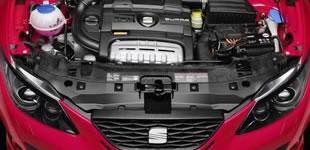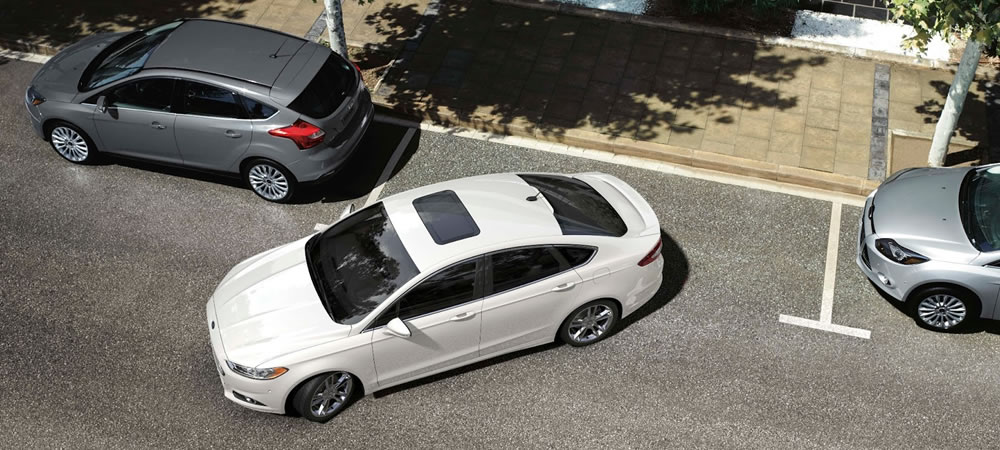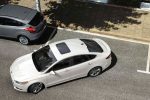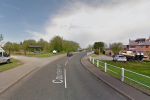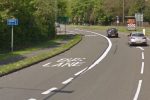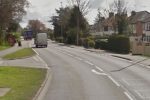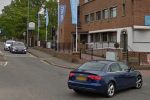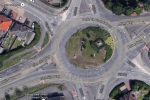As you progress through your lessons your instructor will take through the various manoeuvres that you may be asked to complete during your practical test. There are four basic manoeuvres, the turn in the road, the left reverse, the reverse park and the bay park. One in three candidates are also asked to complete the emergency stop.
Key Skills
- Control: The key to all manoeuvres is control. The slower you go the easier the manoeuvre will be. Using clutch control and brake control keep the car at a walking pace.
- Observation: During the manoeuvre it is vital that you keep aware of what is around you. Make sure you keep checking all your mirrors and blind spots. If you spot any hazards stop and let them pass before carrying on with your manoeuvres.
- Accuracy: All of the manoeuvres require a degree of accuracy. For example finishing within the lines of a parking bay or keeping close to the curb during the left reverse. Your instructor will give you various reference points that will make help you with each manoeuvre.
The Turn in the Road
Objective
Formerly called the 3-point turn, the aim of the turn in the road is to get the car turned around and pointing in the opposite direction.
Remember
Control – Keep the car slow.
Observation – Keep looking around.
Accuracy – Get close to the curb.
Key Points
Slow car/Quick steering
Observation throughout the manoeuvre
Be aware of the camber of the road
Main Stages
Stage 1
Engage 1st, Find bite, 360 observation. If clear move slowly forward and turn full lock to the right. Steer to the left just before the curb.
Stage 2
Engage reverse, Find bite, 360 observation. If clear reverse slowly and turn full lock to the left. Steer to the right when close to curb.
Stage 3
Engage 1st, Find bite, 360 observation. If clear move slowly forward and turn full lock to the right.
Check your mirrors and drive on.
Click here to download lesson plan
Video Example
The Left Reverse
Objective
To be able to reverse the car into an opening on the left, safely and under control.
Remember
Control – Keep the car slow.
Observation – Keep looking around.
Accuracy – Keep close to the curb.
Main Stages
Break the manoeuvre into stages (don’t be afraid to stop). Make sure the side road is clear as you pass the side road. Park close to the curb, approximately two car lengths from the corner. You don’t need to keep really close to the curb, try to maintain a gap of approximately one to two feet from the curb.
Stage 1:
Dip mirror so that front door handle is at the bottom of the mirror, Engage reverse, Find bite and 360 observations.
Reverse until curb breaks away from front door handle.
Stage 2:
Bite and 360 observations.
If clear reverse slowly and turn 3/4 to the left.
React to curb movements as soon as you see them, the longer you delay reacting to the curb the more work you will do. If the curb comes close turn back to a 1/4 of a turn (or straight if really close), if the curb then moves away turn back to 3/4 turn. On a particularly sharp turn you may need to increase your turn to more than 3/4 to a full turn. Repeat this until the curb becomes straight in your door mirror.
Stage 3:
360 observations, straighten wheels and reverse slowly 3 car lengths from the junction.
Secure the car and reposition the mirror. Remember 1-2-3 (Neutral, Handbrake and Mirror)
Click here to download lesson plan
Alternate Method for Left Reverse
As an alternate method for the Left Reverse you can try the following steps. Be warned that with this method isn’t as effective on sharper corners. Only hold the wheel in 3/4 or straight positions.
Stage 1:
Dip the left door mirror until you can see the front door handle at the bottom of mirror. Engage reverse, Find bite and 360 observations. Reverse until curb breaks away from front door handle.
Stage 2:
At this point only hold the wheel at a 3/4 turn left or completely Straight.
Bite and 360 observations. If clear reverse slowly and 3/4 turn left, when the curb comes close turn back to straight, when the curb moves away again back to 3/4 and repeat. Only hold the wheel in the 3/4 position or straight. Keep following these steps until the curb is straight behind you.
Stage 3:
Once the car and curb are parallel in the door mirror reverse back 3 car lengths until your clear of junction. 1-2-3 to finish.
The Reverse Park
Objective
The aim of this manoeuvre is to park in behind another vehicle keeping within two car lengths of the other vehicle and finishing close to the curb.
Remember
Control – Keep the car slow.
Observation – Keep looking around.
Accuracy – Finish close to curb within two car lengths of the other vehicle.
Key Points
1-2-1 steering turns using pivot point on side of car.
Pull alongside parked car approximately 1m away. Line up door mirror with front seats of the parked car. Drop door mirror to see reference point on wheel arch, the sticker should be towards the bottom of your mirror.
Stage 1:
Engage reverse, Find bite and 360°ree; observation. If clear reverse slowly and one turn to the left. Keep observing. Stop when reference point touches bottom the curb.
Stage 2:
360°ree; observation, reverse very slowly whilst immediately turning two quick turns to the right. Keep observing.
Stage 3:
When the car becomes parallel with the vehicle in front, straighten the wheels with 1 turn to the left. Stop, secure the car and reposition the mirror for normal driving. Remember 1-2-3 (Neutral, Handbrake and Mirror).
Click here to download lesson plan
The Bay Park
Objective
To reverse slowly into a car parking space finishing between the lines.
Remember
Control – Keep the car slow.
Observation – Keep looking around.
Accuracy – Finish between the lines.
Key Points
Use full right lock and position the car with the reference point on the window.
Pull slowly into the car park, positioning yourself approximately 1m from the bays. Line up reference point with white lines. Count back 3 bays to be sure the bay is empty. Drop the door mirror to help you see the line on your left side.
Stage 1:
Engage reverse, Find bite and 360 observation. If clear, reverse slowly whilst turning immediately full lock to the right. Keep observing.
Stage 2:
When car becomes straight and level with bay straighten wheels. Keep observing. When car reaches the back of the bay, stop and secure car. Remember 1-2-3 (Neutral, Handbrake and Mirror).
Click here to download lesson plan
Emergency Stop
Objective
The aim of the emergency stop is stop the car quickly and under control.
Remember
When the examiner says stop…
No mirror – This the only time you are allowed to stop the car without checking the mirrors.
Quick reaction – A quick reaction is obviously important in order to avoid any hazards.
Brake firmly yet progressively – You will need to break hard yet you don’t want to slam the breaks on and cause a skid. Brake firmly and then increase pressure on the pedal steadily.
Clutch just before you stop – After the car slows depress the clutch fully, to avoid stalling. Do not press the brake and clutch at the same time, brake and then clutch.
Keep both hands on the wheel – Under heavy braking the car may pulled to the side by bumps or the camber in the road. In order to control this you will need both hands on the wheel.
Secure the car – When the car stops apply the handbrake and select neutral.
Check both blind spots – When the examiner says drive on when your ready make sure you do a 360 observation before you drive away, signal right if necessary.

